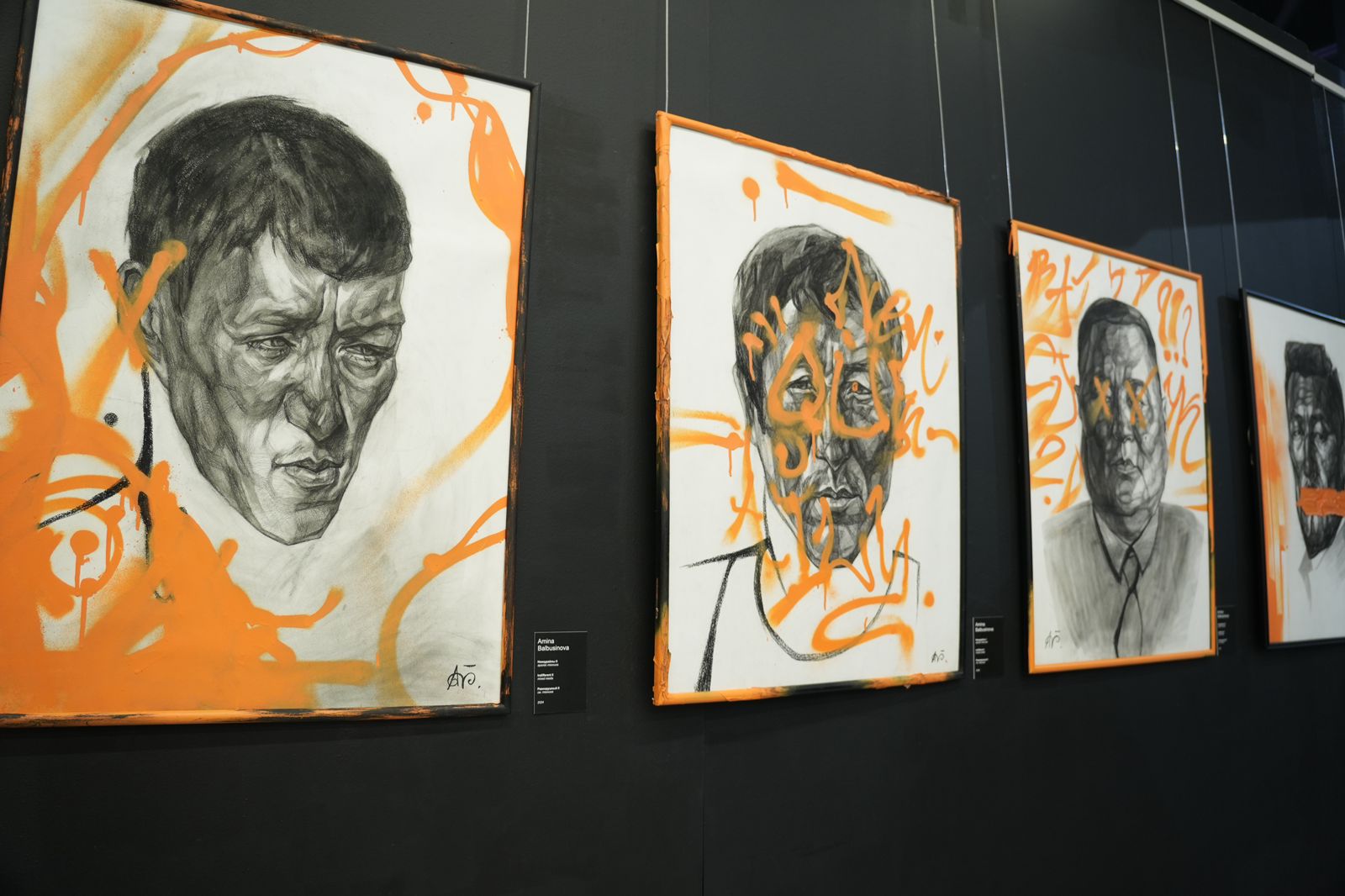
The ANAU-MYNAU exhibition brought together 35 talented artists from all over the country, working in the fields of painting and graphics. Their creative endeavors form a unique face of contemporary Kazakhstani art.
"We will now hold the biennale every two years at this venue and give young artists a chance to express themselves. We have been preparing for the exhibition for quite a long time - eight months. We thought about the concept, selected applications, of which there were a lot. After the 150th, I stopped counting the number. The entire international curatorial council of Kulanshi worked hard, but we chose those who are represented here today. During the selection process, we did not restrict genres and techniques, because everyone has their own artistic language. We concentrated more on the idea of the work and the quality of performance. As a result, we selected the best and intend to work with them as artists, not just as contestants", - said Leila Makhat, Chairperson of the curatorial council of the Kulanshi Contemporary Art Center.
The first Youth Art Biennale is an important step in supporting artists. The platform opened new names to the audience and created conditions for creative dialog. The world through the eyes of young artists is expressed in diverse works. Young artist Aruzat Tilep submitted a portrait of her grandmother Umit.
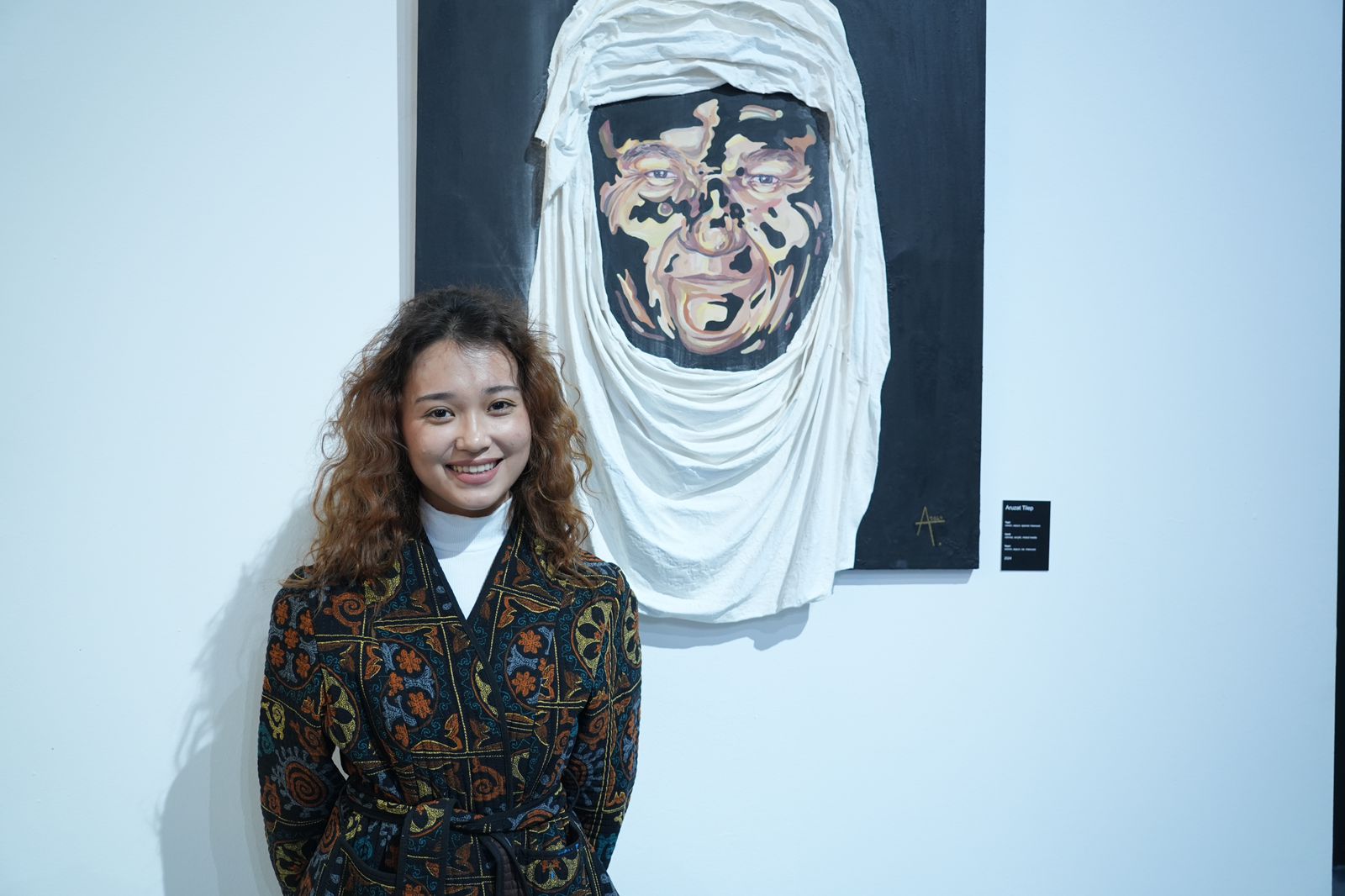
"Unfortunately, I did not catch her in life, but everyone says that I am very similar to her both in character and voice. Inspired by the image of my grandmother, I decided to dedicate this painting to her. I used different materials: plaster and fabric. My other work "Nazar" is also exhibited here. Both paintings have not been presented anywhere before. In the work "Nazar" I expressed my love for nature. I am from Kostanay region, we live near the forest and love to walk in the fresh air. Once I noticed that the places on the trees from cut knots look like eyes. It felt as if the trees were watching us. This thought inspired me," said Aruzat Tilep.
The portrait genre is also represented at the Biennale by the work of Yaroslava Tishchenko. Her two works, which the author wanted to show the faces of modern Kazakhstan, were selected. According to the artist, portraits of ordinary people are rarely seen at exhibitions nowadays.
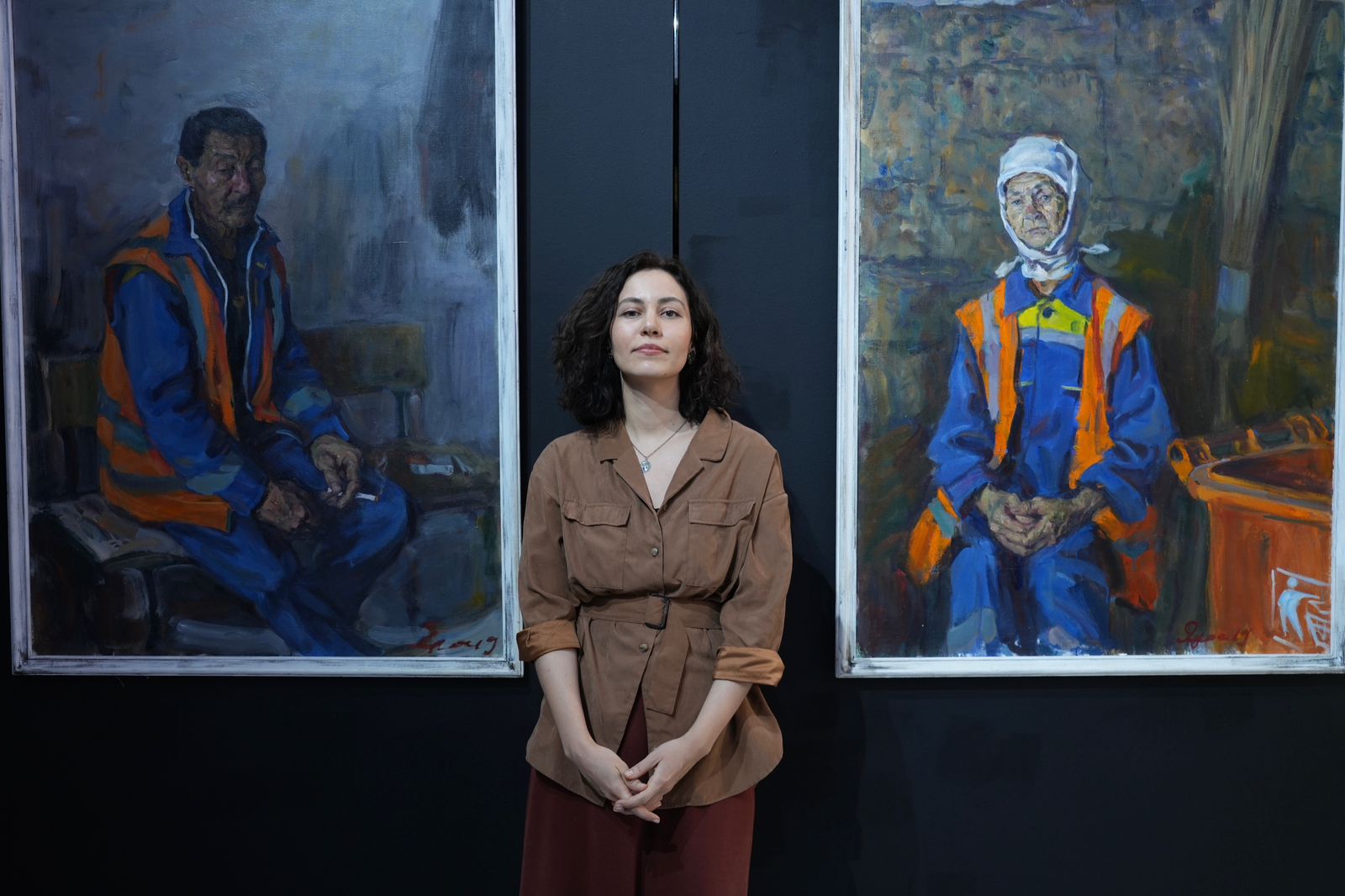
"You could say this is almost an endangered form of painting. We have so many memorable interesting people, they are not captured in portrait painting in any way. With these two portraits, I would like to pay tribute to people in the service industry: janitors, trolley bus drivers and all those people we don't notice. Working uniform depersonalizes a person, and behind it there is usually a hard fate, a hard way passed. I live in Almaty, and these people worked near my workshop. I took them out of the work week and asked them to pose for me. We had a lot of conversations about their life path," said Yaroslava Tishchenko. Artist Eugenia Grekina presented an abstraction in which she expressed her thoughts on how computer algorithms affect living human thinking.
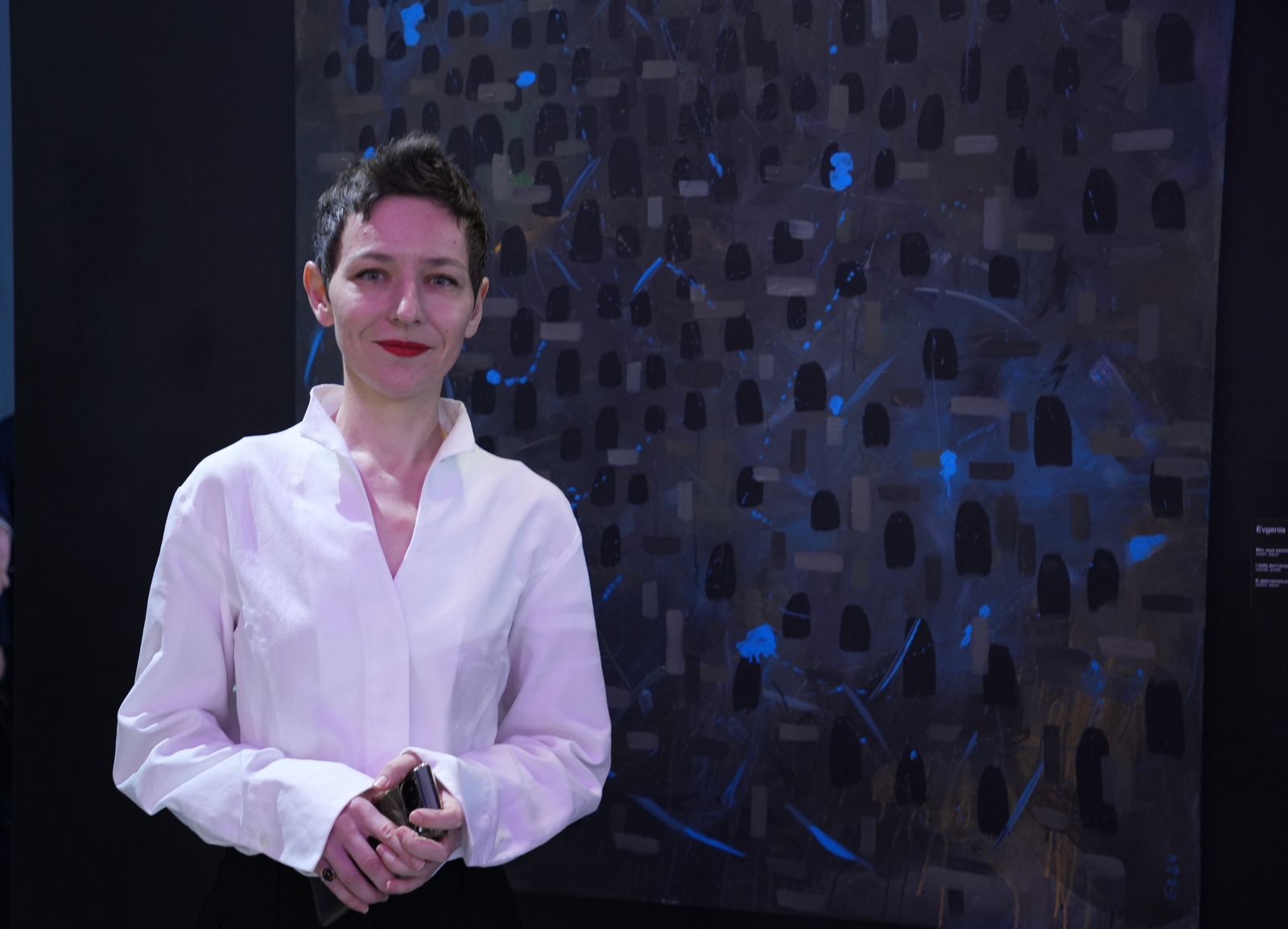
"In the conditions of these algorithms, it is very scary to make a mistake, to violate something. The people who make these mistakes are very much thrown out of context by the algorithmic systems. If you've done something unfamiliar, you're probably not going to fit into some concept. There's less live, biological movement. I myself got caught up in these algorithms. For example, when you're running Instagram, you start to create a personal brand and try to conform to it. This affects your mindset and how you communicate with others. Deeper values, such as friendship, take a back seat. Profit and benefit come first," said Evgenia Grekina.
The young authors expressed their views, beliefs and even musical preferences in their paintings. Maria Volynskikh, an artist from Siberia, moved to Kazakhstan two years ago. Her painting introduces visitors to the Siberian folk band Gilead.
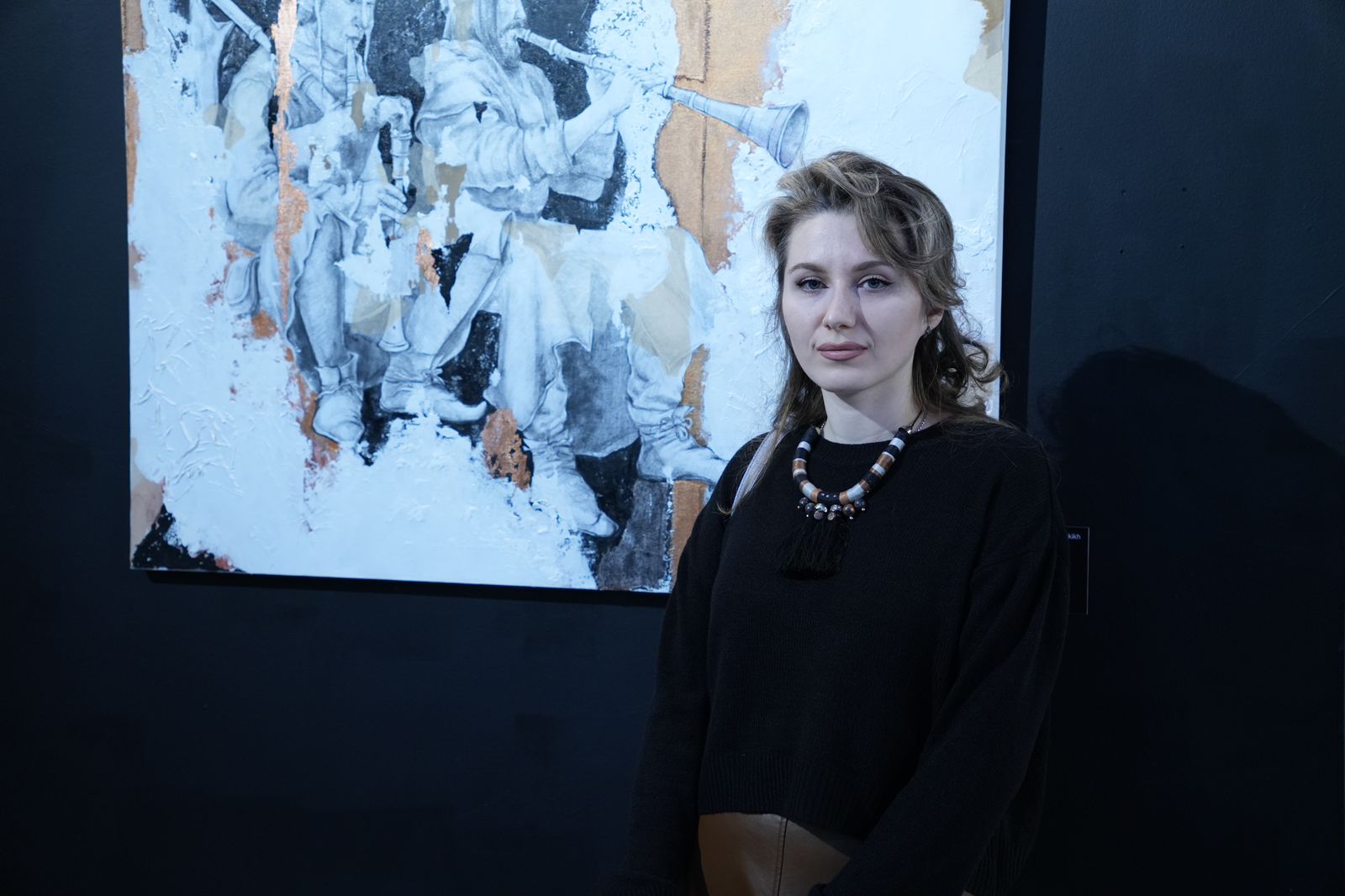
"This is an amazing band that writes medieval music, participates as historical re-enactors and plays at many festivals around the world. Started the painting a year ago. I didn't really like the first draft, so I primed it. And then, when I saw the announcement of the exhibition, I decided to finish it. It seemed to me that it would fit in with the ethnic style of the event. I am originally from the Russian town of Irbit. Now I live in Astana, I work with children and prepare them for university," Maria Volynskikh said. He submitted five works for the competition. The painting "Spring", which, as it turned out, has already been sold to a private collection, was selected.
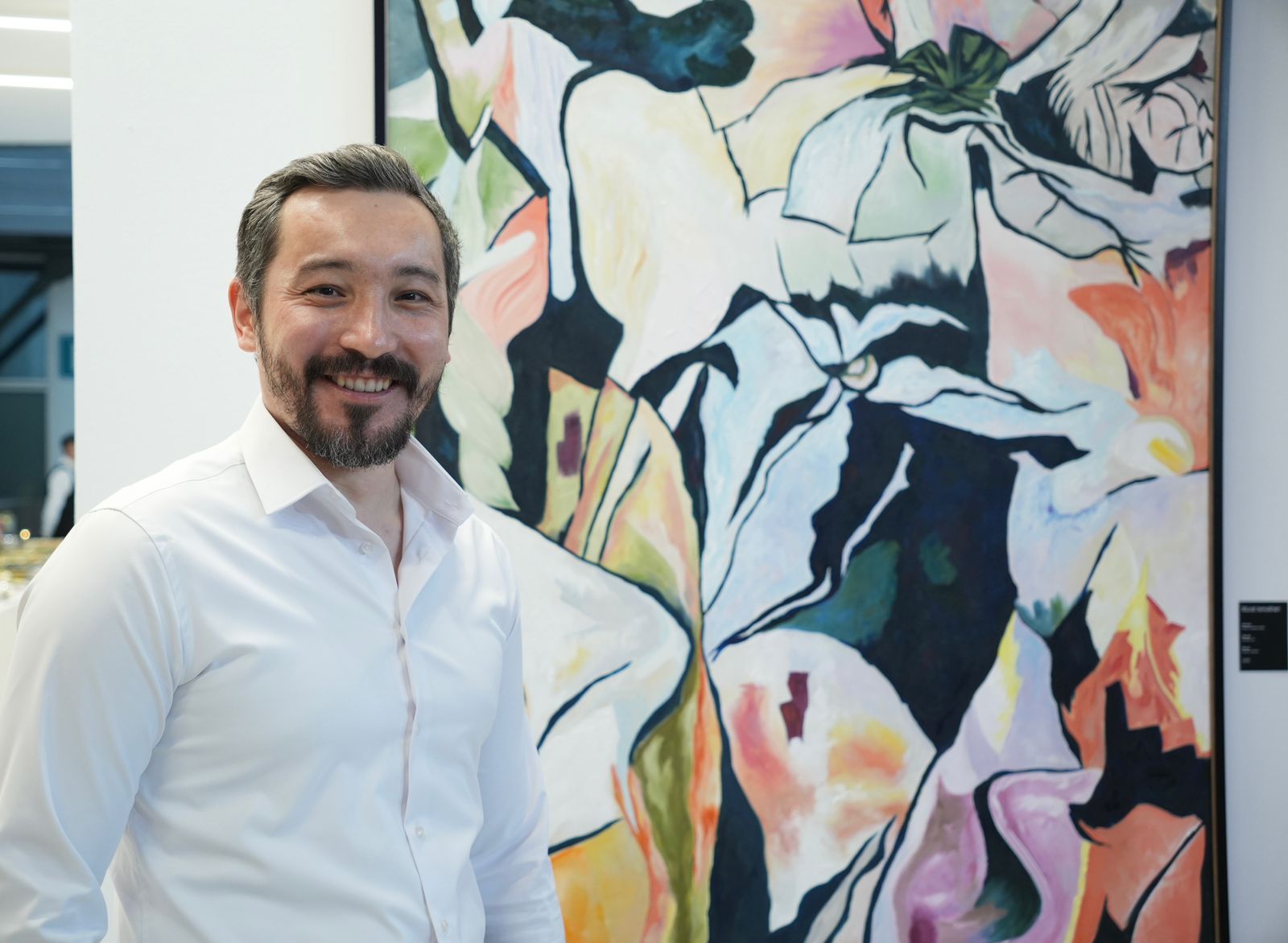
"The painting has already been sold, but I took it for the Biennale against a receipt and a deposit. After it was selected here, there was a desire to paint Winter, Autumn and Summer. I was inspired by the spring in Astana. I have been living in the capital for the last four years. I am from Kokshetau and have exhibited there before. Astana absorbed me with its schedule. Sometimes I don't have enough energy to paint. I have written about ten works, eight of them are sold, one is exhibited. I think this is not a bad indicator," Murat Ismukhan said.
The works of young authors show a desire to understand the world, find their place and express themselves through fine art. Movement and search reflect the essence of the new project of the Kulanshi Center for Contemporary Art. The exhibition at the capital's FORTE KULANSHI ART SPACE will be on view through March 2.









